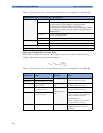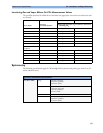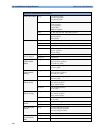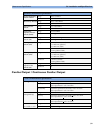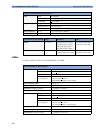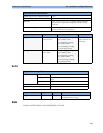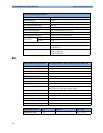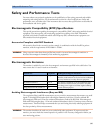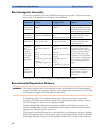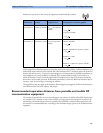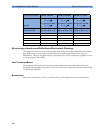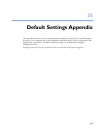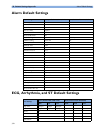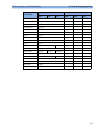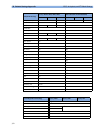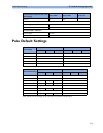
34 Installation and Specifications Safety and Performance Tests
366
Electromagnetic Immunity
The monitor is suitable for use in the specified electromagnetic environment. The user must ensure
that it is used in the appropriate environment as described below.
In this table, U
T
is the a.c. mains voltage prior to application of the test level.
Recommended Separation Distance
WARNING The monitor, equipped with a wireless network interface, intentionally receives RF electromagnetic
energy for the purpose of its operation. Therefore, other equipment may cause interference, even if that
other equipment complies with CISPR emission requirements.
In the following table, P is the maximum output power rating of the transmitter in watts (W)
according to the transmitter manufacturer and d is the recommended separation distance in metres
(m). The values given in brackets are for respiration and BIS.
Portable and mobile RF communications equipment should be used no closer to any part of the
monitor, including cables, than the recommended separation distance calculated from the equation
appropriate for the frequency of the transmitter.
Field strengths from fixed RF transmitters, as determined by an electromagnetic site survey, should be
less than the compliance level in each frequency range (over the frequency range 150 kHz to 80 MHz,
field strengths should be less than 1 V/m for respiration and BIS and 3 V/m for all other functions).
Immunity test
IEC 60601-1-2
test level
Compliance level
Electromagnetic environment
guidance
Electrostatic
discharge (ESD)
IEC 61000-4-2
± 6 kV contact
± 8kV air
± 6 kV contact
± 8kV air
Floors should be wood, concrete, or
ceramic tile. If floors are covered
with synthetic material, the relative
humidity should be at least 30%.
Electrical fast
transient/burst
IEC 61000-4-4
± 2 kV for power supply lines
± 1 kV for input/output lines
± 2 kV for power supply
lines
± 1 kV for input/output lines
Mains power quality should be that
of a typical commercial and/or
hospital environment
Surge
IEC 61000-4-5
± 1 kV differential mode
± 2 kV common mode
± 1 kV differential mode
± 2 kV common mode
Mains power quality should be that
of a typical commercial and/or
hospital environment
Voltage dips,
short
interruptions
and voltage
variations on
power supply
input lines
IEC 61000-4-
11
<5%
U
T
(> 95% dip in U
T
) for 0.5
cycles
40%
U
T
(60% dip in U
T
) for 5 cycles
70%
U
T
(30% dip in U
T
) for 25 cycles
< 5%
U
T
(> 95% dip in U
T
) for 5 sec
<5%
U
T
(> 95% dip in U
T
) for 0.5
cycles
40%
U
T
(60% dip in U
T
) for 5 cycles
70%
U
T
(30% dip in U
T
) for 25
cycles
< 5%
U
T
(> 95% dip in U
T
) for 5 sec
Mains power quality should be that
of a typical commercial and/or
hospital environment. If the user of
the monitor requires continued
operation during power mains
interruptions, it is recommended
that the monitor is equipped with
an internal battery or is powered
from an uninterruptible power
supply.
Power frequency
(50/60 Hz)
magnetic field
IEC 61000-4-8
3 A/m 3 A/m Power frequency magnetic fields
should be a t levels characteristic of
a typical location in a typical
commercial and/or hospital
environment



